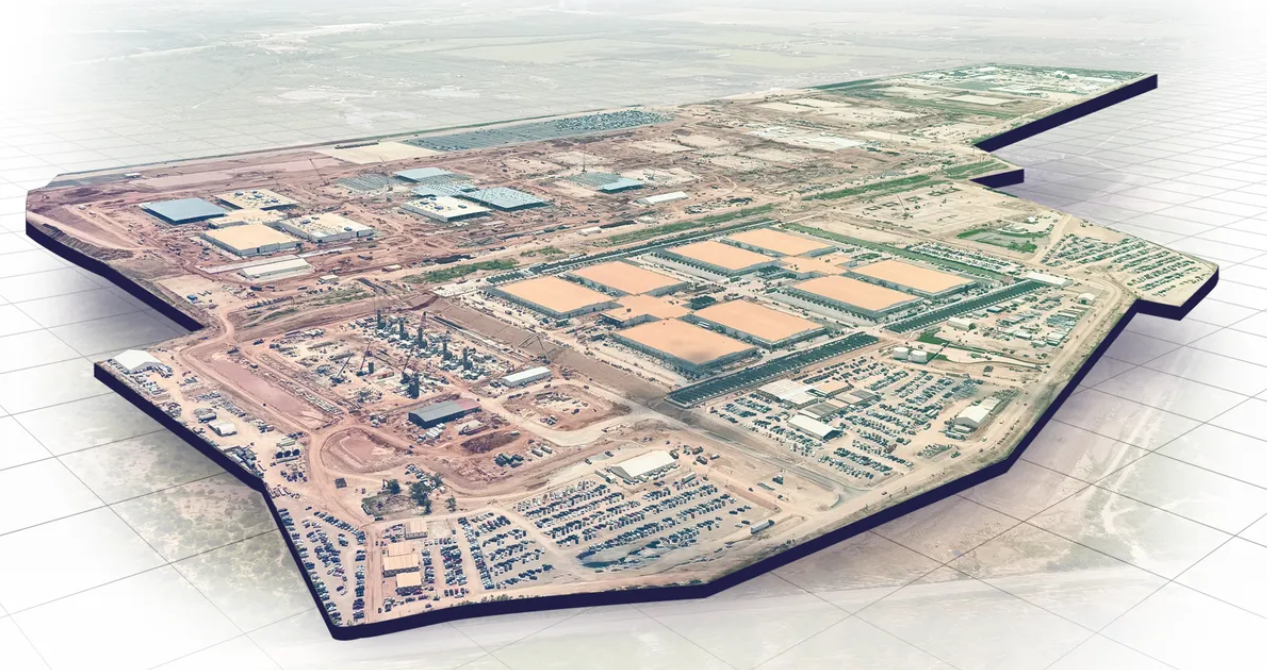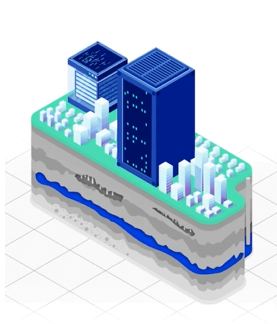When AI Data Center Environmental Footprint Comes Knocking: The True Cost on Land, Water & Power
Artificial intelligence (AI) is no longer confined to science fiction; it’s embedded in everything from voice assistants to predictive analytics. But behind every “Hey, Siri,” and every recommendation engine lies massive computational infrastructure: AI data centers. These mammoth installations, buzzing with powerful servers, have an often-overlooked environmental footprint. From devouring land and water to guzzling electricity, AI data centers are fast becoming a new dimension in resource consumption. This article examines every aspect of that footprint, including its impact on land, water, and power, both globally and locally. It explores the innovations that aim to mitigate this impact and what a forward-thinking future might look like.
1. Understanding the AI Data Center Environmental Footprint

What is the “environmental footprint”?
In simple terms, the environmental footprint of AI data centers covers all resource inputs (land, water, electricity) and the indirect environmental consequences (carbon emissions, ecological disruptions, local infrastructure strain). This concept captures physical resource usage, operational designs, and the ripple effects in communities and ecosystems.
Why AI data centers?
AI models, especially large neural networks, require extraordinary computing power. Generative AI (like large language models) and high-resolution image or video processing models need clusters of high-performance GPUs or TPUs. Unlike older, general-purpose computing, AI workloads often run continuously and at near-peak load, dramatically increasing resource demands.
2. Land: The Physical & Ecological Cost

Space Requirements
AI data centers are vast. Typical hyperscale centers can occupy 50–100 acres or more. For example, major cloud companies sometimes lease or develop parcels of land approximately 100 acres per site. That’s an area comparable to dozens of football fields.
Siting & Ecological Impacts
Choosing locations often prioritizes remoteness, connectivity, and regulatory ease, but those lands may include fragile ecosystems, wetlands, forests, or agricultural zones. Clearing land can lead to habitat loss, biodiversity decline, and disruption of local water cycles.
Indirect Land Effects
Land acquisition may spur infrastructure expansion roads, power lines, and substations, further fragmenting natural areas. Additionally, local land values and tax bases may change, displacing traditional land uses like farming or natural buffers.
3. Water: The Silent Consumption
Cooling Systems
Efficient AI servers generate intense heat. Keeping them operating at safe temperatures requires substantial cooling. Many centers use evaporative cooling towers or water-cooled heat exchange systems. Water evaporates to carry away heat, and then must be replenished, often several million gallons per day in large facilities.
Local Water Stress
In arid or semi-arid regions like parts of India, the western U.S., or the Middle East, drawing from aquifers or municipal water supplies strains agriculture and communities. Some advanced cooling techniques, like closed-loop systems or air cooling, reduce water use but at the cost of efficiency or performance.
Discharge & Water Quality
Used cooling water, either through evaporation or discharge can raise local water temperatures (thermal pollution) or carry dissolved minerals or chemicals. That alters aquatic ecosystems and can complicate downstream water usage.
4. Power: The Energy Appetite

Electricity Consumption
AI data centers represent some of the most energy-intensive facilities on the planet. A single modern data center can exceed hundreds of megawatts in peak power draw, which is comparable to a small city. AI-specific data centers often run near full capacity nearly continuously, dramatically increasing electricity consumption.
Carbon Emissions
Unless sourced from renewables, electricity generation likely relies on fossil fuels coal, natural gas, and oil, resulting in high carbon emissions. The AI model training process especially consumes electricity on a scale that can emit tens of tons of CO₂ per single model training run.
Grid Impacts & Infrastructure Strain
Constant high draws can stress local grids. Upgrades to transformers, substations, and transmission infrastructure may often be needed at taxpayer expense. There’s also increased vulnerability to blackouts if demand spikes during heat storms or other high-consumption periods.
5. Connecting the Dots: A Holistic Perspective
When evaluating AI data center impacts, it’s critical to see how land, water, and power interplay:
- Land choice affects water availability and electricity delivery. A remote site may be cheap but require long power lines and water pipelines.
- Water-intensive cooling drives energy use, and vice versa. Air-cooled systems use less water but more electricity, and water-cooled systems save energy but strain water resources.
- Infrastructure upgrades for power may encroach on additional land or divert critical water resources, creating multiplier effects.
6. Real-World Examples & Data Points
Google’s Data Centers
Google invests heavily in renewable energy, but its data centers still consume vast water volumes in cooling. In water-stressed regions, they’ve switched to recycled or non-potable sources, but adaptation is ongoing.
Microsoft & Project Natick
Microsoft’s underwater “Project Natick” explored submarine data centers cooled by surrounding ocean water. The pilot used natural cooling and avoided land siting, though limited geographically. It shows creative thinking, but it is not scalable everywhere.
Amazon & Eco-Friendly Siting
Amazon claims to site future data centers near renewable generation zones (wind, solar farms) and water bodies for cooling but balancing site selection with community impact remains a challenge.
Note: Specific numbers on acres, megawatts, or gallons per day are emerging; industry transparency varies. Some companies publish “Water Usage Effectiveness (WUE)” or “Power Usage Effectiveness (PUE)” metrics; policymakers are pushing for more granular reporting.

7. Innovations to Mitigate Impact
Liquid Cooling & Immersion Systems
Some AI data centers are adopting direct liquid cooling or even full immersion cooling, where servers sit in thermally conductive fluid. These dramatically reduce power for cooling and water use, increasing energy efficiency 2–5X compared to air-cooled.
Waste Heat Recovery
Redirecting waste heat to nearby residential or commercial facilities for heating buildings or greenhouses is gaining traction. It transforms a cost into a resource.
Renewable Integration & Energy Storage
Pairing solar/wind farms with battery or hydrogen storage systems allows centers to run on 24/7 clean energy. Google’s renewable energy certificates (RECs) are a start, but on-site renewables plus storage provide more resilience and reduce transmission needs.
Smart AI Workload Scheduling
Shifting compute-heavy tasks to off-peak hours (when renewable generation is high or grid demand is low) helps flatten load curves. Adaptive scheduling, informed by AI itself, is becoming sophisticated.
Circular Water Systems
Closed-loop or zero-liquid discharge (ZLD) systems recycle nearly all water used in cooling. Some centers are also exploring air-cooled chillers paired with intermittent water sprinkling to reduce steady consumption.
8. Policy, Regulation, and Community Perspectives
Water Rights & Regulation
In many countries, large water draws need special permits, especially in drought-prone regions. Tighter regulation is now emerging to cap water use, restrict groundwater withdrawal, or mandate recycling.
Zoning & Environmental Impact Assessments (EIAs)
Governments are tightening EIA requirements for data centers, especially regarding land and ecosystem disruption. Some jurisdictions require mitigation, such as wetland restoration or community support funds.
Carbon & Energy Efficiency Standards
Regulatory frameworks like carbon pricing or clean energy mandates push data centers toward renewable adoption and efficiency. The EU’s ongoing proposals for data center energy consumption labeling are an example.
Community Advocacy
Local communities are increasingly vocal about the impacts of data centers on city water usage, strain on power systems, and reduced access to natural resources. In some cases, public opposition has delayed or canceled projects.
9. What the Future Holds
- Hyper-Efficient Data Center Designs: Expect more AI-specific facilities optimized for liquid cooling, waste heat reuse, and modular deployment.
- Distributed & Edge AI: Instead of hyperscale, we may see many small, localized, low-impact AI “nodes” (edge computing), reducing single-site resource intensity.
- AI-Powered Sustainability Management: AI itself will orchestrate power allocation, cooling, and compute scheduling to minimize footprint versus performance.
- Regulation-Aligned Innovation: As policies evolve, data center design will integrate environmental management from the ground up, including land restoration and resource-neutral operations.
- Circular Resource Integration: Water cycling, heat recycling, sharing power and water systems with communities, and multi-use campus models will emerge.
10. What You Can Do
- Demand transparency: Ask AI service providers for PUE, WUE, water reuse stats, and renewable sourcing clarity.
- Support sustainable hosting: Choose cloud and AI platforms that clearly disclose and offset environmental footprints.
- Local advocacy: Push for stronger regulations and impact assessments before new data centers are approved.
- Innovation supports: Encourage or invest in startups pioneering liquid cooling, micro data centers, or waste heat applications.
- Personal awareness: Understand that every AI interaction chatbot, smart home, and recommendation involves environmental costs, and choose more sustainable usage when possible.
Conclusion
The AI data center environmental footprint is a compelling and increasingly urgent story. These massive digital fortresses are reshaping resource consumption across land, water, and power domains. While the AI revolution drives innovation, automation, and creativity, it also demands that we confront tangible, physical consequences.
By examining land impacts, water demands, power strains, and emerging solutions, this article offers a comprehensive lens: one that embraces both the transformative potential of AI and the stewardship responsibility that must accompany it.
“What do you think about the growing AI data center environmental footprint? Share your thoughts in the comments below.” “If you found this article insightful, share it with friends and colleagues to spread awareness about AI’s hidden environmental cost.” Subscribe to our newsletter today.